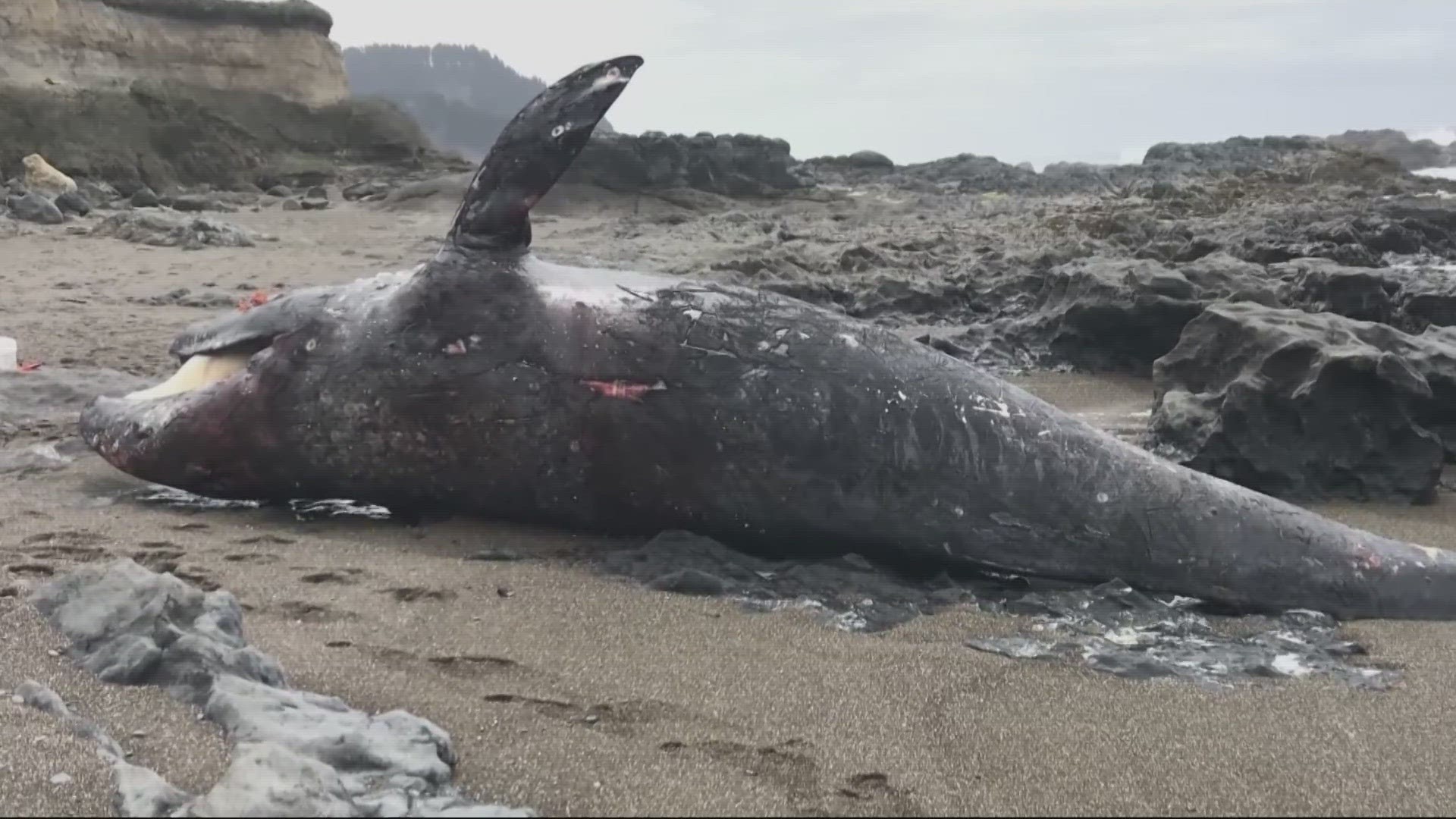PORTLAND, Oregon —
Since 2019, gray whales have been dying at alarming rates off the Pacific Coast, so much so that it was deemed an Unusual Mortality Event by federal officials.
That whole time, the cause of the die-off has been a bit of a mystery. But researchers from Oregon State University now believe they’ve found the cause, detailed in a study published Thursday.
“It feels like this time we've got a pretty good smoking gun,” said Josh Stewart, an assistant professor at Oregon State’s Marine Mammal Institute and the lead author on the study. “We can now say much more conclusively that it is probably Arctic conditions that are driving these things.”
Gray whales migrate more than 12,000 miles each year — the longest of any animal in the sea— from the coast of Mexico, where they birth their calves in the winter, to their feeding grounds in the Arctic, where they bulk up before they being their journey again.
And it’s in those northern reaches where the trouble began, said Stewart.
Gray whales mostly feed on small crustaceans called benthic amphipods. The amphipods in turn are fed by algae that grows on the underside of sea ice. As climate change has warmed the Arctic at rates up to four times faster than the rest of the planet, sea ice coverage has diminished, leaving less algae to feed the amphipods and a smaller prey base for the gray whales.
“When you have less sea ice and fewer days of sea ice, you don't get that algae reaching the sea floor to create that productivity that the gray whales need,” Stewart said. “We know that the resources that gray whales are relying on — to feed, to make a living, to reproduce — are already heavily impacted by climate change and will continue to be increasingly impacted by climate change.”
Since the Unusual Mortality Event began, nearly 700 whales have washed up on West Coast beaches in the U.S., Canada and Mexico, but many more have likely died at sea.
The National Oceanic and Atmospheric Administration estimated the population of gray whales off the Pacific Coast was around 27,000 in 2016, the largest number since monitoring began in 1967. That number had fallen to roughly 20,000 in 2020 and the most recent estimate, from last winter, put the number at just over 14,500.
Gray whales have been seen as a bit of a success story, Stewart said, with the species making an impressive rebound since commercial whaling was banned. It’s also one of the most well-studied species of large whales on the planet, with monitoring efforts dating back to 1967 cataloging the species’ birth rates, abundance and body condition.
It’s that robust data set that allowed Stewart to analyze not only the current mortality event, but also similar ones in the 1980s and the late 1990s.
The current die-off, though, has some key distinctions from its predecessors.
“The two previous events, despite being significant and dramatic, only lasted a couple of years,” Stewart said. “The most recent mortality event has slowed and there are signs things are turning around, but the population has continued to decline. One reason it may be dragging on is the climate change component, which is contributing to a long-term trend of lower-quality prey.”


Despite the problems they’re facing, Stewart said he’s not worried that gray whales will disappear completely. At least not in the short term.
“They're resilient animal. They're adaptive,” he said. “They can change the areas that they feed in. So I'm not worried about them going extinct.”
But with a certain amount of warming already locked in by the amount of fossil fuels humans have already burned, and few signs of a significant cut to greenhouse gas emissions in the near future, Stewart said we may need to get used to seeing fewer gray whales off our coasts.
“We're going to be increasingly living in a world where we're going to have to deal with these impacts that are hard to reverse and have really significant effects on species that we care a lot about,” he said. “And that's a hard thing to stomach.”

